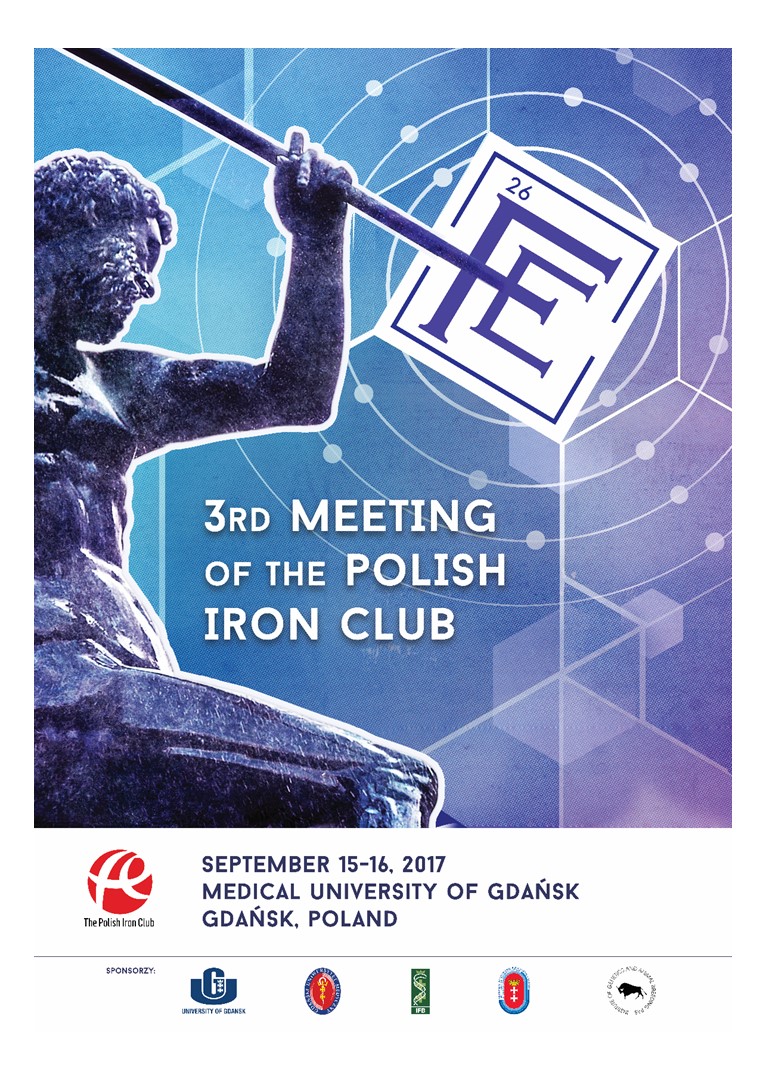Iron: Anno Domini 2017
The current year is plentiful in science events devoted to biology of iron. After the 7th Meeting of the International BioIron Society (IBIS) at UCLA in May, and the European Iron Club Meeting (EIC) in Münster in June, the time has come for the 3rd Meeting of the Polish Iron Club (PIC), this year organized at The University of Gdansk. Similarly to previous meetings, we wish this one to be an accessible and friendly forum for beginner scientists. Over a half of the presentations will be given by doctoral students and young doctors. On the other hand, it has become a tradition of our meetings to hold sessions during which distinguished European scientists give extended lectures on a selection of themes on iron metabolism. This time our choice of subject matter seems the best possible. It is hepcidin, its biological functions, its mechanisms of action and regulation of its expression. Lectures will be given by our guests: Martina Muckenthaler from Heidelberg University, who is also the organizer of the upcoming IBIS meeting in 2019, Hal Drakesmith from the University of Oxford, EIC President, and Sophie Vaulont from Institut Cochin in Paris, who witnessed the birth of hepcidin for iron metabolism [1]. The history of hepcidin is relatively recent yet rapid. Barely have the triumphant headlines from French press of 2001 died away: “Iron insulin” discovered at last (Libération), The discovery of iron hormone (Le Figaro), French team discovers the hormone of iron metabolism in mice (Le Monde), when almost three and a half thousand articles can already be found under item hepcidin on PubMed database.
This year is the 80th anniversary of ferritin isolation and crystallization by the Czech doctor and physiologist, prof. Vilem Laufberger [2]. Ferritin is an unique protein with exceptional potential in nature for storing iron (up to 4500 atoms per molecule). Although the structure, function and regulation of ferritin synthesis has been thoroughly researched, only recently has new information arrived on the protein’s regulated pathways of biological degradation, in result of which “scrap iron” deposited in the molecules of ferritin can be reused for biological purposes under conditions of cellular iron deficiency. The issue will be dealt with at our meeting. Last but not least, this year is the 40th anniversary of the discovery of post-transcriptional system regulating expression of iron metabolism genes [3], whose components include cytoplasmic Iron Regulatory Proteins (IRP) and regulatory sequences - Iron Responsive Elements (IRE). It is commonly considered that the IRP/IRE system together with hepcidin constitute two pillars supporting iron homeostasis in mammals.
We sincerely hope that this Acta Biochemica Polonica supplement incorporating summaries of scientific presentations given during the 3rd PIC Meeting will become a complement and an update of information on the biology of iron for the academic community in Poland.
Jędrzej Antosiewicz, Paweł Lipiński, Katarzyna Sikorska
ABSTRACTS AVAILABLE (FREE ACCESS) ON-LINE: HTTP://WWW.ACTABP.PL
[1] Nicolas G, Bennoun M, Devaux I, Beaumont C, Grandchamp B, Kahn A, Vaulont S. Lack of hepcidin gene expression and severe tissue iron overload in upstream stimulatory factor 2 (USF2) knockout mice. Proc Natl Acad Sci U S A. 2001 98(15):8780-5.
[2] Laufberger V. Sur la cristallisation de la ferritine. Soc Chim Biol 1937;18:1575-82.
[3] Zähringer J, Baliga BS, Munro HN. Novel mechanism for translational control in regulation of ferritin synthesis by iron. Proc Natl Acad Sci U S A. 1976 73(3):857-61.
